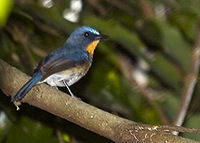|
| 질의: description | 결과: 131번째/10150 | |
Cyornis banyumas | Hill Blue Flycatcher

| 해상도: 280x200
파일크기: 53150 Bytes
촬영일: 2006:06:01 10:55:31
사진기: Canon EOS 20D (Canon)
F number: f/4.0
Exposure: 1/250 sec
Focal Length: 200/1
등록시간: 2008:04:02 01:46:45
|
|
|

